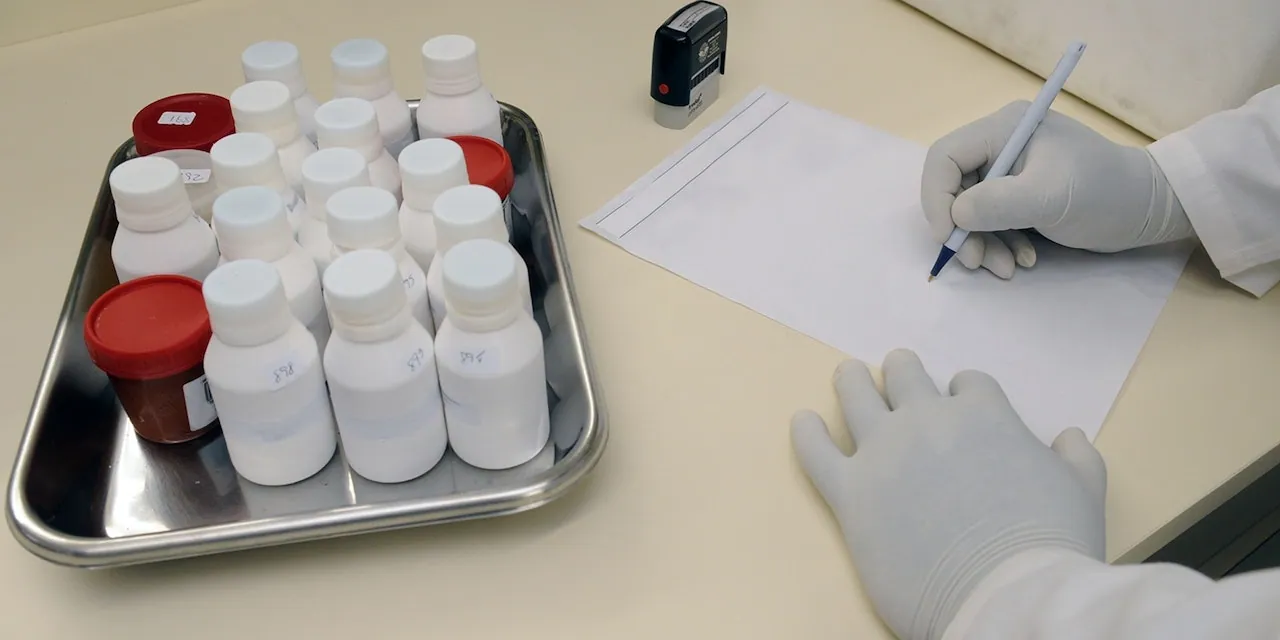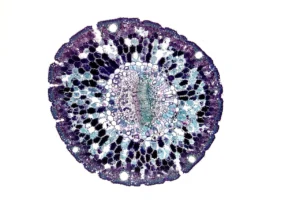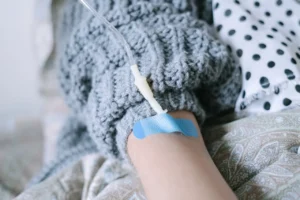
FDA accepts application for Roche’s Vabysmo for the treatment of retinal vein occlusion (RVO)
Roche (SIX: RO, ROG; OTCQX: RHHBY) announced today that the U.S. Food and Drug Administration (FDA) has accepted the company’s supplemental Biologics License Application (sBLA) for Vabysmo® (faricimab) for the treatment of macular edema following retinal vein occlusion (RVO). The sBLA is based on results from the phase III BALATON and COMINO studies that demonstrated treatment with Vabysmo provided early and sustained improvement in vision, meeting the primary endpoint of non-inferior visual acuity gains at 24 weeks compared to aflibercept.1,2 Vabysmo’s safety profile was consistent with previous trials.
“This acceptance brings us one step closer to delivering Vabysmo as a treatment for retinal vein occlusion, a disease that affects more than one million people in the United States and can cause severe and sudden vision loss,” said Levi Garraway, M.D., Ph.D., Roche’s Chief Medical Officer and Head of Global Product Development. “If approved, this would be the third indication for Vabysmo, the first bispecific antibody available for the treatment of retinal conditions that can cause blindness.”
The data from the BALATON and COMINO studies will be submitted to other health authorities around the world, including the European Medicines Agency, for approval for the treatment of macular edema following RVO. The studies are ongoing, and data from weeks 24 to 72 will assess the potential of Vabysmo to extend dosing intervals up to every four months.1,2
Vabysmo is the first bispecific antibody approved for the eye and was approved in the United States for the treatment of neovascular or ‘wet’ age-related macular degeneration (nAMD) and diabetic macular edema (DME) in January 2022.3 Vabysmo has also been approved in 60 countries around the world, including Japan, the United Kingdom and in the European Union for people living with nAMD and DME.3-7 Neovascular AMD, DME and RVO together affect around 70 million people worldwide and are among the leading causes of vision loss.8-12
Vabysmo’s efficacy and safety profile in nAMD and DME is supported by four large, global studies involving more than 3,000 participants and extensive real-world experience, with nearly one million Vabysmo doses distributed globally.7,13-16 Vabysmo is the first bispecific antibody approved for the eye with phase III studies supporting treatment intervals of up to four months for people with these conditions.4 It targets and inhibits two signalling pathways linked to a number of vision-threatening retinal conditions by neutralising angiopoietin-2 (Ang-2) and vascular endothelial growth factor-A (VEGF-A).13,14
About the BALATON and COMINO studies1,2
BALATON (NCT04740905) and COMINO (NCT04740931) are two randomised, multicentre, double-masked, global phase III studies evaluating the efficacy and safety of Vabysmo® (faricimab) compared to aflibercept. For the first 20 weeks, patients are randomised 1:1 to receive six monthly injections of either Vabysmo (6.0 mg) or aflibercept (2.0 mg). From weeks 24 to 72, all patients receive Vabysmo (6.0 mg) up to every four months – according to a personalised treatment interval dosing regimen – using a treat-and-extend approach.
The BALATON study is being conducted in 553 patients with branch retinal vein occlusion. The COMINO study is being conducted in 729 patients with central retinal or hemiretinal vein occlusion.
The primary endpoint of each study is the change in best-corrected visual acuity from baseline at 24 weeks. Secondary endpoints include change in central subfield thickness (CST) from baseline over time up to 24 weeks.
Both studies met the primary endpoint, with Vabysmo showing non-inferior visual acuity gains compared to aflibercept. The average vision gains from baseline were comparable between the two treatments in both studies. In BALATON, vision gains were +16.9 eye chart letters in the Vabysmo arm and +17.5 letters in the aflibercept arm at 24 weeks. In COMINO, vision gains were +16.9 letters in the Vabysmo arm and +17.3 letters in the aflibercept arm at 24 weeks.
A secondary endpoint showed that Vabysmo achieved rapid and robust drying of retinal fluid, as measured by reduction in CST from baseline. In both studies, reductions in CST were comparable across treatment arms. In BALATON, CST reductions from baseline at 24 weeks were 311.4 μm in the Vabysmo arm and 304.4 μm in the aflibercept arm. In COMINO, CST reductions from baseline at 24 weeks were 461.6 μm in the Vabysmo arm and 448.8 μm in the aflibercept arm.
Additionally, both studies showed that more Vabysmo patients had an absence of blood vessel leakage in the retina compared to aflibercept patients as seen in a pre-specified exploratory endpoint. Blood vessel leakage in the macula may lead to more retinal fluid, which can cause swelling and blurry vision.
In BALATON, one-third of patients (34%) treated with Vabysmo had an absence of macular leakage compared to one-fifth (21%) of aflibercept patients at 24 weeks. In COMINO, the rates were 44% for Vabysmo patients versus 30% for aflibercept patients at 24 weeks.
In both studies, Vabysmo’s safety profile was consistent with previous trials. The most common adverse reaction was conjunctival haemorrhage (3%). Safety results were consistent across study arms.
The studies are ongoing, and data from weeks 24 to 72 will assess the potential of Vabysmo to extend dosing intervals up to every four months.
About retinal vein occlusion (RVO)
RVO is the second most common cause of vision loss due to retinal vascular diseases. It affects an estimated 28 million adults globally, mainly those aged 60 or older, and can lead to severe and sudden vision loss.8,17 RVO typically results in sudden, painless vision loss in the affected eye because the vein blockage restricts normal blood flow in the affected retina, resulting in ischaemia, bleeding, fluid leakage and retinal swelling called macular edema. Currently, macular edema due to RVO is typically treated with repeated intravitreal injections of anti-vascular endothelial growth factor therapies.19 There are two main types of RVO: branch RVO, which affects more than 23 million people globally and occurs when one of the four smaller ‘branches’ of the main central retinal vein becomes blocked; and central RVO, which is less common, affecting more than four million people worldwide, and occurs when the eye’s central retinal vein becomes blocked.8,19
About the Vabysmo® (faricimab) clinical development programme
Roche has a robust phase III clinical development programme for Vabysmo. The programme includes AVONELLE-X, an extension study of TENAYA and LUCERNE evaluating the long-term safety and tolerability of Vabysmo in neovascular or ‘wet’ macular degeneration (nAMD), and Rhone-X, an extension study of YOSEMITE and RHINE evaluating the long-term safety and tolerability of Vabysmo in diabetic macular edema (DME).20,21 In addition, Roche is investigating the efficacy and safety of Vabysmo in people with macular edema following retinal vein occlusion (RVO) in two phase III studies, BALATON and COMINO.1,2 Roche has also initiated several phase IV studies, including the ELEVATUM study of Vabysmo in underrepresented patient populations with DME, the SALWEEN study of Vabysmo in a subpopulation of nAMD highly prevalent in Asia, as well as the VOYAGER study, a global real-world data collection platform.22-24 Roche also supports several other independent studies to further understand retinal conditions with a high unmet need.7
About Vabysmo® (faricimab)
Vabysmo is the first bispecific antibody approved for the eye.3,5 It targets and inhibits two signalling pathways linked to a number of vision-threatening retinal conditions by neutralising angiopoietin-2 (Ang-2) and vascular endothelial growth factor-A (VEGF-A). Ang-2 and VEGF-A contribute to vision loss by destabilising blood vessels, causing new leaky blood vessels to form and increasing inflammation.13,14 By blocking pathways involving Ang-2 and VEGF-A, Vabysmo is designed to stabilise blood vessels.13,14 Vabysmo is approved in 60 countries around the world, including the United States, Japan, the United Kingdom and in the European Union for people living with neovascular or ‘wet’ age-related macular degeneration and diabetic macular edema. Review by other regulatory authorities is ongoing.3-7
About Roche in ophthalmology
Roche is focused on saving people’s eyesight from the leading causes of vision loss through pioneering therapies. Through our innovation in the scientific discovery of new potential drug targets, personalised healthcare, molecular engineering, biomarkers and continuous drug delivery, we strive to design the right therapies for the right patients.
We have the broadest retina pipeline in ophthalmology, which is led by science and informed by insights from people with eye diseases. Our pipeline includes gene therapies and treatments for geographic atrophy and other vision-threatening diseases, including rare and inherited conditions.
Applying our extensive experience, we have already brought breakthrough ophthalmic treatments to people living with vision loss. Susvimo™ (previously called Port Delivery System with ranibizumab) 100 mg/mL for intravitreal use via ocular implant is the first U.S. Food and Drug Administration-approved refillable eye implant for neovascular or ‘wet’ age-related macular degeneration that continuously delivers a customised formulation of ranibizumab over a period of months.25 Vabysmo® (faricimab) is the first bispecific antibody approved for the eye, which targets and inhibits two signalling pathways linked to a number of vision-threatening retinal conditions by neutralising angiopoietin-2 (Ang-2) and vascular endothelial growth factor-A (VEGF-A).3,5,13,14 Lucentis®* (ranibizumab injection) is the first treatment approved to improve vision in people with certain retinal conditions.26
About Roche
Founded in 1896 in Basel, Switzerland, as one of the first industrial manufacturers of branded medicines, Roche has grown into the world’s largest biotechnology company and the global leader in in-vitro diagnostics. The company pursues scientific excellence to discover and develop medicines and diagnostics for improving and saving the lives of people around the world. We are a pioneer in personalised healthcare and want to further transform how healthcare is delivered to have an even greater impact. To provide the best care for each person we partner with many stakeholders and combine our strengths in Diagnostics and Pharma with data insights from the clinical practice.
Source link:https://www.roche.com/




